New homes are being built in all kinds of places today. Many are constructed on sites which have a well-known history, and while finding evidence of this is expected, the variety and quality of preservation of some come as a great surprise. And there are occasional instances where something is uncovered or unearthed that provides a whole new perspective of what has happened in that place over the centuries.
We look at a few examples of the kind of thing that housebuilders around the country have discovered when preparing their sites for construction.
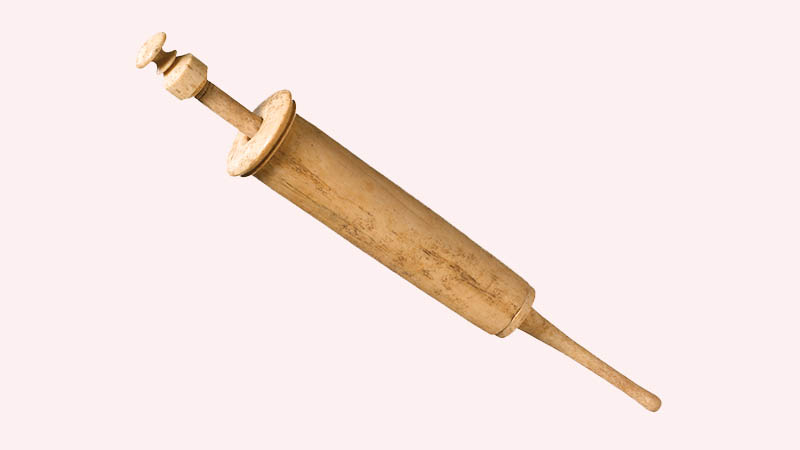 On the border of Elephant & Castle and Walworth, the site of this apartment development from Notting Hill Genesis has a colourful history, starting in Victorian times as popular and notable public baths complete with swimming pools, showers and a laundry. When those facilities became out of use, the venue played a leading role in boxing in the era of the Kray twins.
On the border of Elephant & Castle and Walworth, the site of this apartment development from Notting Hill Genesis has a colourful history, starting in Victorian times as popular and notable public baths complete with swimming pools, showers and a laundry. When those facilities became out of use, the venue played a leading role in boxing in the era of the Kray twins.
Preparation of the site was monitored by Museum of London Archeology in 2016 and 2017 and they found all sorts of items that reflected life on and around it.
Secret lemonade drinkers will know the name R White, and the company was based in this area in the early days. There have been many finds of unbroken bottles for their mineral and carbonated water products. In addition, there have been bottles, jars and lids discovered for a wide array of things, from cold cream to ginger beer. A decorative vase, ‘fancy’ clay tobacco pipe, and bone syringe and toothbrushes have also been collected.
Cavendish Park, Bolsover
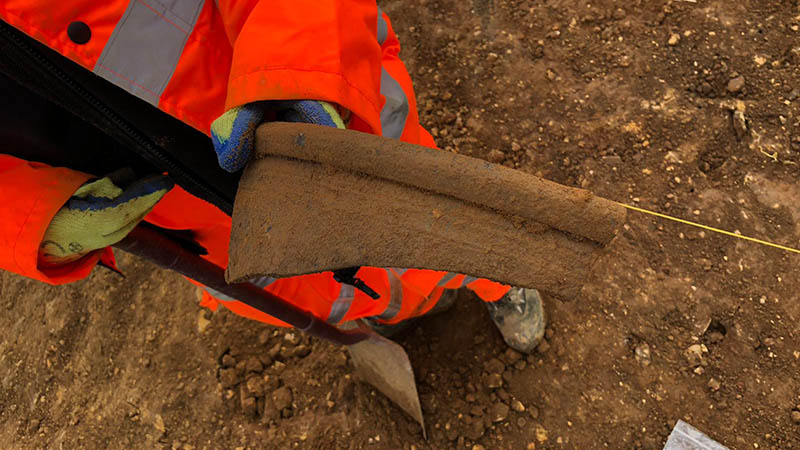 Archaeological Research Services (ARS) was commissioned by Jones Homes to work on a 16-acre site in Bolsover, Derbyshire, ahead of the construction of its 127-home development. They unearthed many remains of a Roman settlement, with evidence of buildings, pits, field systems and half-a-dozen graves, as well as artefacts such as a knee broach and pottery imported from southern France. Bronze coins dating back to the reign of Emperor Constantine the Great were a discovery extremely rare in Derbyshire.
Archaeological Research Services (ARS) was commissioned by Jones Homes to work on a 16-acre site in Bolsover, Derbyshire, ahead of the construction of its 127-home development. They unearthed many remains of a Roman settlement, with evidence of buildings, pits, field systems and half-a-dozen graves, as well as artefacts such as a knee broach and pottery imported from southern France. Bronze coins dating back to the reign of Emperor Constantine the Great were a discovery extremely rare in Derbyshire.
The site’s history was found to pre-date those times considerably, with prehistoric field systems believed to have been introduced during the Bronze Age (2500BC to 800BC).
Reuben Thorpe, head of field archaeology at ARS said: “The discoveries have exceeded our expectations. It has given us a fascinating insight into the way the settlements changed and how the land was used in different periods. We can see from the Prehistoric field systems that there was a certain way of doing things before the Romans arrived and imprinted their own distinctive systems onto the English landscape.
Jayne Swift, sales and marketing director for Jones Homes Yorkshire, said: “It has been absolutely fascinating to watch the progress of the archaeological excavation. We are thrilled that by bringing forward this development of new homes, we have enabled archaeologists to make these exciting discoveries and add to our understanding of the way our ancestors used the land in centuries past.”
New development, Cam
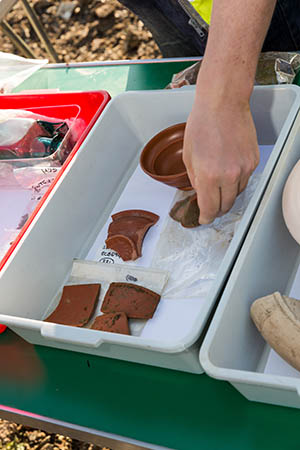 Bovis Homes started preparation for its new development of 137 homes in Cam, Gloucestershire and Thames Valley Archaeological Services uncovered the remains of a Roman villa bath house. Local people were delighted with this unexpected find and quickly set up a petition to get the housebuilder to protect it by amending its site plans. Over 6,000 people have signed it.
Bovis Homes started preparation for its new development of 137 homes in Cam, Gloucestershire and Thames Valley Archaeological Services uncovered the remains of a Roman villa bath house. Local people were delighted with this unexpected find and quickly set up a petition to get the housebuilder to protect it by amending its site plans. Over 6,000 people have signed it.
Archeologist Professor Mark Horton, who is Emeritus Professor at the University of Bristol and appeared on TV programme Coast for many years, lives just a few miles away and said: “This is actually a very important discovery. It's a major find, not just for Cam and Dursley, but for Gloucestershire too. While villas are quite common in these parts, the preservation is exceptional.There's a fabulously preserved hypocaust system and there's lots of interesting rooms, not yet fully excavated. The walls are a foot high and they may go down a lot deeper too.”
Bovis Homes recently announced it would change its plans “so that there will be no homes or hard-standing on the ground above the site of the villa's remains”. Technical director Nigel Lush, commented: “In terms of the villa’s preservation and the public's health and safety, leaving the remains exposed to the elements was not a feasible option but we believe we have found a compromise that allows the community to enjoy the villa and find out more about Cam's history.”
Campaigner Christie McLean responded: “I think it's fantastic. They've joined the community spirit and they've made changes in accordance with what the locals would like.”
Leon House, Croydon
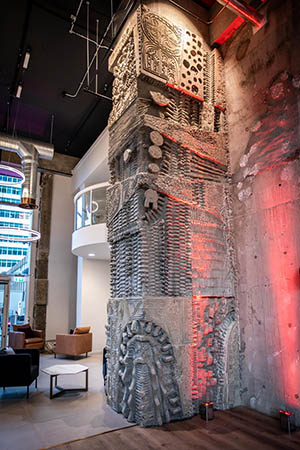 Legal & General Affordable Homes discovered some art history behind drywall as they converted a Brutalist building in south London from office use to a collection of Shared Ownership homes. Hidden away were original works from renowned post-war sculptor William Mitchell, who died just last month aged 94. His sculptures, predominantly constructed in concrete or glass reinforced concrete, can be found in a very wide range of places across the UK, from commercial premises to cathedrals.
Legal & General Affordable Homes discovered some art history behind drywall as they converted a Brutalist building in south London from office use to a collection of Shared Ownership homes. Hidden away were original works from renowned post-war sculptor William Mitchell, who died just last month aged 94. His sculptures, predominantly constructed in concrete or glass reinforced concrete, can be found in a very wide range of places across the UK, from commercial premises to cathedrals.
The previously hidden work have been retained throughout and a floor-to-ceiling pillar is the focal point in the expansive foyer.
A spokesperson for FI Real Estate Management at this development said: “We were pretty surprised when we began the refurbishment works on site to discover this huge artwork. After speaking to art experts and local historians we realised the significance of the William Mitchell sculpture and began carefully uncovering it in order to restore it to its former glory.”
Art historian Dr Dawn Pereira Ph.D, a research fellow at The Henry Moore Institute, commented: “William Mitchell’s concrete artworks at Leon House capture the skill and versatility of his craft; from the spectacular technical feat of the structural deep relief columns running through the two lower floors, to the subtle cast repeat patterns in every lift lobby level, to the unique hand-carved works in each staircase. With much of Mitchell’s work inspired by ancient civilisations, their rediscovery seems like we have found something from long ago; yet their reinstatement feels modern, enabling us all to share in their tactility and originality.”
Llanwern, South Wales
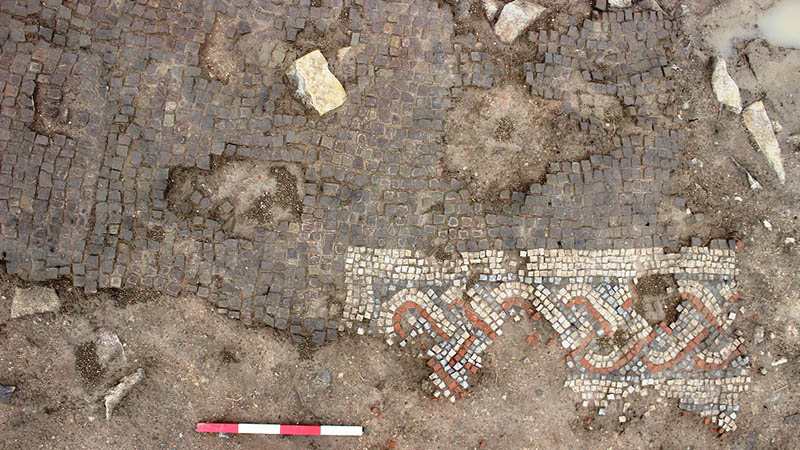 Cotswold Archaeology, a team of archaeologists working on a Redrow development in Llanwern, east of Newport in South Wales, have found a Roman settlement of three stone buildings there which they believe date between the second and fourth centuries AD.
Cotswold Archaeology, a team of archaeologists working on a Redrow development in Llanwern, east of Newport in South Wales, have found a Roman settlement of three stone buildings there which they believe date between the second and fourth centuries AD.
There’s an apsed building (an apse is a semicircular recess covered with a hemispherical vault or semi-dome) which contained a small number of burials and may have been a mausoleum. There’s also a rectangular building, one room of which contained a very fragmentary mosaic floor, which the specialists say is rare to find outside of the major settlements at Caerleon and Caerwent), and a circular building.
The Glamorgan Gwent Archaeological Trust, archaeological advisors to the Unitary Authorities in south-east Wales, commented: “The discovery of the building and its associated features, including water management, greatly adds to our knowledge of the Roman settlement and land use along the Gwent Levels.”
Kate Lacey, area sales manager at Redrow South Wales, said: “We are very pleased to share these findings from the excavation project at our development in Llanwern. We are looking forward to learning more about the artefacts once the excavation is complete.”
The finds will be deposited with the local museum and Redrow plans to recover selected findings for a display within the school proposed for the site.
Trilogy, Borough and The Stage, Shoreditch
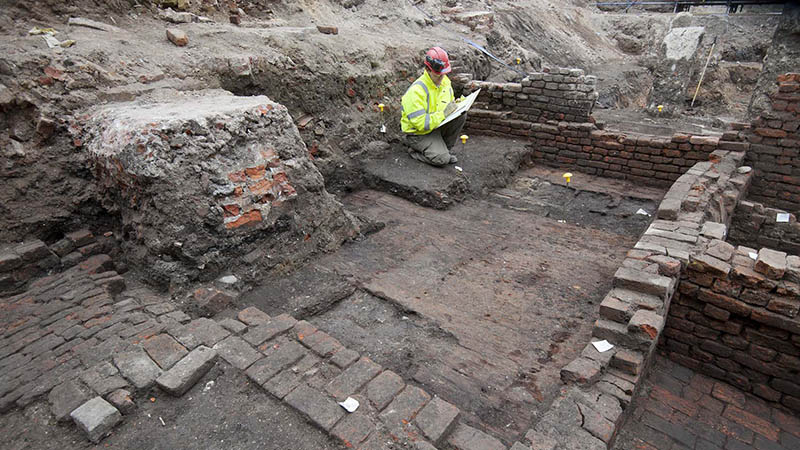 David Galman, sales director at Galliard Homes commented: “Any developer working in Central London is bound to uncover interesting history or unique artefacts when working on a site that has not been developed for a long time. It’s important that developers follow procedures and don’t try to rush the process, so that the site’s history is preserved. We have had several significant discoveries on our sites; at Trilogy in Borough, we discovered a Roman sarcophagus on site, and at The Stage the remains of the Curtain Theatre were uncovered, where Shakespeare’s Henry V was first performed.
David Galman, sales director at Galliard Homes commented: “Any developer working in Central London is bound to uncover interesting history or unique artefacts when working on a site that has not been developed for a long time. It’s important that developers follow procedures and don’t try to rush the process, so that the site’s history is preserved. We have had several significant discoveries on our sites; at Trilogy in Borough, we discovered a Roman sarcophagus on site, and at The Stage the remains of the Curtain Theatre were uncovered, where Shakespeare’s Henry V was first performed.
“At The Stage, the exact location of the Curtain theatre remains were not discovered until the detailed excavation began, a hugely exciting discovery for both the local London community and wider literature community. Working closely with our JV partner Cain International, we’re proud to have worked with specialists to preserve these sites and recognise the history found, contributing to a site’s legacy, not detracting from it.”
Among other recent finds are an Iron Age bronze shield at a Persimmon Homes site in Pocklington, East Riding of Yorkshire and Roman artefects at the Ebbsfleet Garden Village development in north Kent.
Jonathan Lewis, sales director at Weston Homes, said: “At Weston Homes we often work with brownfield sites, which means a site may have a rich history to uncover during the construction process. It is of paramount importance for a developer to ensure procedures are followed, to help anticipate if any historical artefacts are expected, and to help preserve any artefacts that are uncovered.
“Looking back on our many years of housebuilding, we’ve had a few discoveries including a burial mound on one site, and each time it’s been key to work with the experts to process the discovery carefully.”